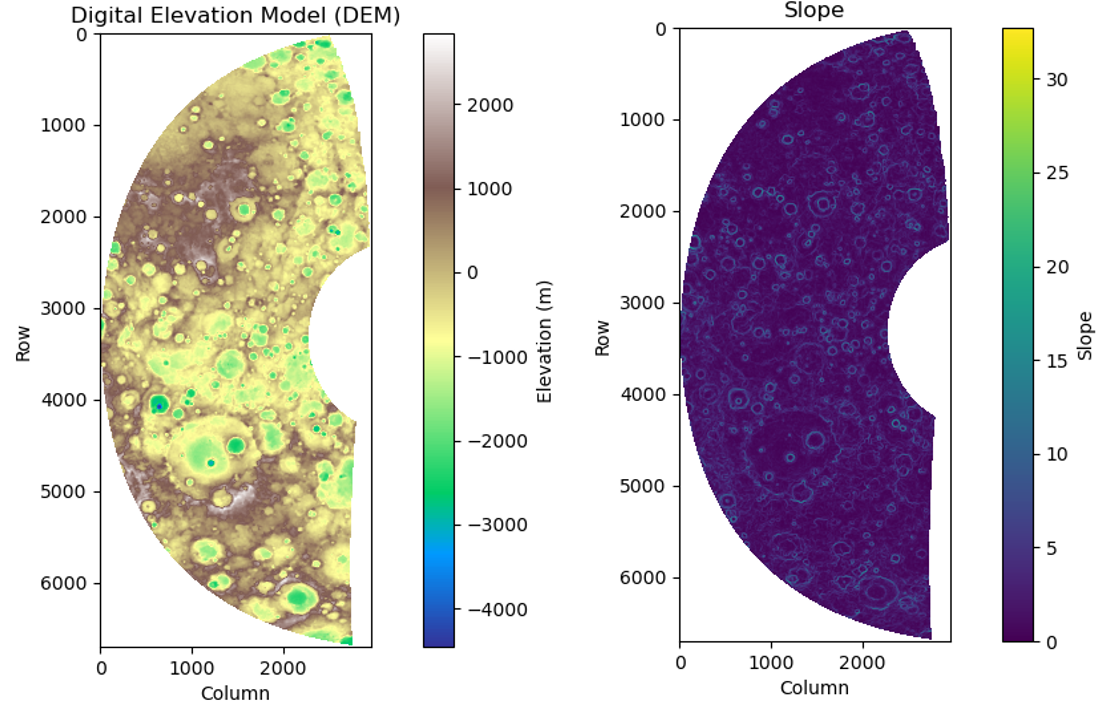Preliminary temperature analysis of the Region of Interest using MERTIS onboard BepiColombo for the upcoming Mercury's 5th Flyby.
- 1Deutsches Zentrum für Luft- und Raumfahrt, Planetary Laboratories, Germany (nimisha.verma@dlr.de)
- 2Institut für Planetologie (IfP), Universität Münster, Germany
Introduction:
The MErcury Radiometer and Thermal infrared Imaging Spectrometer (MERTIS) is an Infrared spectrometer (TIS) and radiometer (TIR) instrument onboard the BepiColombo spacecraft. It is part of the Mercury Planetary Orbiter payload with a spectral wavelength of 7-14 μm and a resolution of 90 nm. The radiometric wavelength of MERTIS is 7-40 μm (Hiesinger et al., 2008). Currently, the MERTIS team is preparing for the upcoming 5th flyby of Mercury by BepiColombo on the 2nd of December, 2024 during which the instrument will observe the Hermean surface to characterize the spectral emission, and map the surface mineralogy and temperature variation of the planet. The observation will be performed using the space view of the instrument.
Figure 1: MERTIS Instrument (ESA, 2024)
Region of Interest:
The currently planned Region of Interest (ROI) expands between 51.54° & -53.18° latitude and -97.17° & -143.30° longitude. It encompasses the Beethoven basin and craters like Michelangelo, Durer and Vieira da Silva. The altitude in the region ranges from 2841 m to -4453.5 m with a maximum slope of around 30°.

Figure 2: Left: Digital Elevation model of the ROI. Right: Slope (in degree) of the ROI.
Methodology:
Due to proximity to the Sun, the surface of Mercury undergoes a large temperature variation while also showcasing difference in regional temperature identified as hot and cold regions. Various factors influence the temperature on Mercury’s surface like the density of impact craters, topography, surface morphology, distance to the sun, density of the material etc. In preparation for the flyby, a preliminary temperature analysis of the ROI is conducted using python language and equations from the Vasavada model.
The surface temperature of Mercury is mainly dependent on three parameters – the radiation received from the sun, the radiative loss of heat and the thermal conduction of the surface and sub-surface (Bauch et al., 2021; Yan et al., 2005). Solar irradiance on the surface of Mercury varies depending on the distance from the sun and the longitude of observation (Yan et al., 2005). During the flyby, mercury will almost be at its closest to the sun with an average distance of 46,959,173 km for the observation period between longitude -97° and -143°. The incidence angle for the period of observation ranges from 81° to 83°. It has been observed that the energy received at longitude 90° and 270° is almost half of the energy received at 0° and 180° during perihelion (Yan et al., 2005). Taking into consideration the above information, the solar irradiance is calculated based on the incidence angle of the sun, the distance and the surface albedo.
The radiative heat loss from the planet during daytime is defined by the upper boundary condition and the lower boundary condition. The upper boundary condition is the calculation of the radiative heat at the surface while the lower boundary is for the sub-surface radiation. For simplifying the process, we do not consider the sub-surface conditions of the planet. Hence, the lower boundary condition is ignored.
In order to calculate the thermal conductivity, we consider the ratio of two parameters – contact conductivity which refers to the ability of two material to conduct heat or electricity through the point of contact and conduction by radiation into a medium. Aubrite is one of the materials considered for the calculation of the thermal conductivity due to its characteristic proximity to the planet Mercury (Keil, 2010).
The results generated from these calculations will be used to develop a temperature map for the ROI. This map will be used along with the emissivity spectral measurement from Planetary Spectroscopy Laboratories (PSL) of the German Aerospace Center (DLR), to better understand the temperature ranges in ROI and characterize the surface mineralogy for the upcoming BepiColombo flyby.
References:
Bauch, K.E., Hiesinger, H., Greenhagen, B.T., Helbert, J., 2021. Estimation of surface temperatures on Mercury in preparation of the MERTIS experiment onboard BepiColombo - ScienceDirect. Icarus 354. https://doi.org/10.1016/j.icarus.2020.114083
Hiesinger, H., Helbert, J., MERTIS Co-I Team, 2008. The Mercury Radiometer and Thermal Infrared Spectrometer (MERTIS) for the BepiColombo mission - ScienceDirect. Planetary and Space Science 58, 144–165. https://doi.org/10.1016/j.pss.2008.09.019
Keil, K., 2010. Enstatite achondrite meteorites (aubrites) and the histories of their asteroidal parent bodies. Geochemistry 70, 295–317. https://doi.org/10.1016/j.chemer.2010.02.002
Yan, N., Chassefière, E., Leblanc, F., Sarkissian, A., 2005. Thermal model of Mercury’s surface and subsurface: Impact of subsurface physical heterogeneities on the surface temperature - ScienceDirect. Advances in Space Research 38, 583–588. https://doi.org/10.1016/j.asr.2005.11.010
How to cite: Verma, N., Helbert, J., Van den Neucker, A., D'Amore, M., Adeli, S., Alemanno, G., Barraud, O., Maturilli, A., Bauch, K., and Hiesinger, H.: Preliminary temperature analysis of the Region of Interest using MERTIS onboard BepiColombo for the upcoming Mercury's 5th Flyby., Europlanet Science Congress 2024, Berlin, Germany, 8–13 Sep 2024, EPSC2024-828, https://doi.org/10.5194/epsc2024-828, 2024.